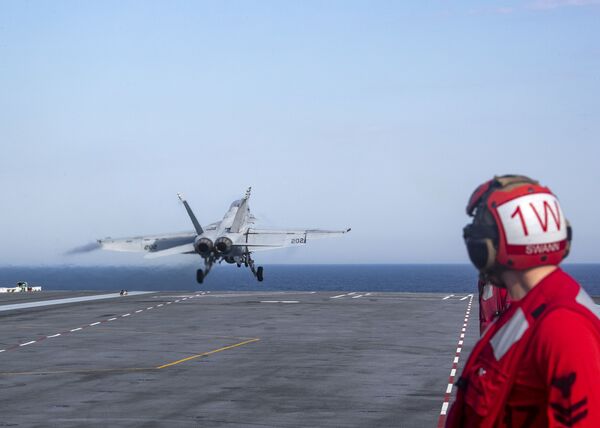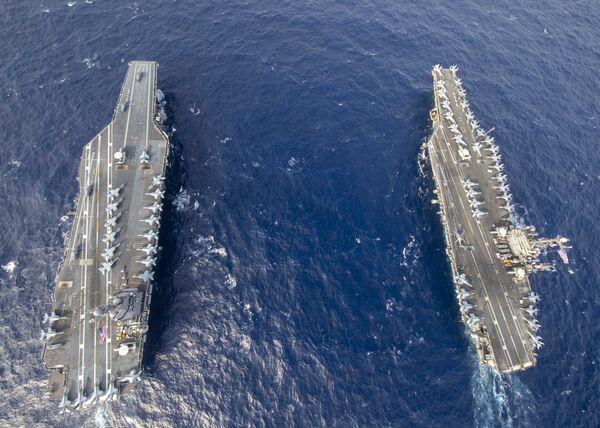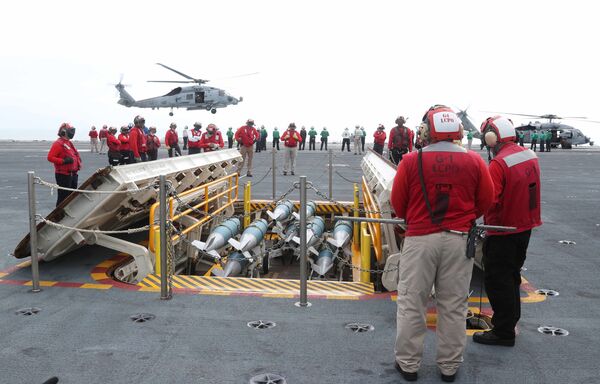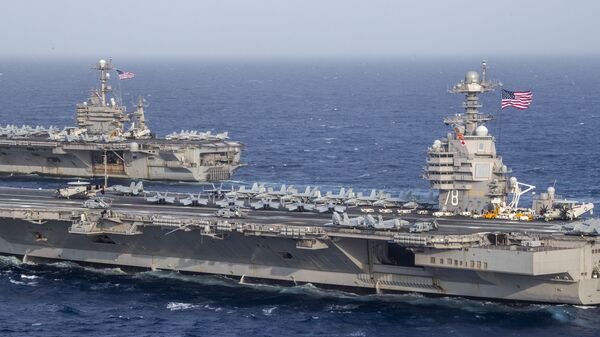During recent post-delivery test and trials (PDT&T) operations at sea, the USS Ford encountered some major problems with its EMALS catapult system that paralyzed flight ops for days.
US and French aircraft carriers use catapults to quickly accelerate fixed-wing aircraft to flying speed, enabling them to take off from the warships’ flight decks. Older carriers used a reliable, if clunky, steam catapult system, but with the new Ford-class warships, the Navy introduced a system that uses powerful magnets instead.

This EMALS system went down on June 2, while the ship was still in port, and wasn’t fixed until June 7, leaving the roughly 80 fighter jets stored in the vast carrier’s hangars unable to fly. Despite this, Captain J.J. Cummings, who commands the Ford, called the voyage a “historic underway,” according to The Virginian-Pilot.
Vital System Goes Down
The Ford set sail from Norfolk, Virginia, on June 4 alongside the USS Harry Truman, an older Nimitz-class carrier the Pentagon has repeatedly weighed the question of retiring early instead of submitting it to a mid-life overhaul in the coming years.

"The fault appeared in the power handling system, during a manual reset of the system," Capt. Danny Hernandez, a Navy spokesperson at the Pentagon, told Military.com on Thursday. "This section is independent of the high pulsed power section to launch aircraft and is not a safety of flight risk. The Navy is reviewing procedures and any impacts on the system."
“Loss of EMALS curtailed flight operations to some extent, but the Strike Group, ship, and air wing team still accomplished significant goals scheduled for the Ford-class aircraft carrier,” the Navy noted in a June 7 news release.
“The ship’s response to these EMALS challenges underscores our ability to identify and to correct issues impacting flight operations quickly. That’s the purpose of the PDT&T phase,” Rear Adm. Craig Clapperton, the commander of Carrier Strike Group (CSG) 12, said in the release. “The learning and improvement that results from pushing the systems will make the ship and air wing team better and more effective in future underway events.”
A ‘Spectacular Debacle’
The problem-ridden EMALS system has attracted ire all the way to the top, with US President Donald Trump repeatedly railing against it as something “you have to be Albert Einstein” to figure out.
In May of last year, as the Ford’s commissioning was being held back by a number of malfunctioning systems, Trump pledged that future carriers would return to the older steam catapult system.
“Steam’s only worked for about 65 years perfectly. And I won’t tell you this, because it’s before my time by a little bit, but they have a $900 million cost overrun on this crazy electric catapult. They want to show - next, next, next. And we all want innovation, but it’s too much,” he said during a visit to the Yokosuka naval base in Japan.

The magnetic catapults, however, are just one problematic system on the $13 billion warship. From new weapons elevators that didn’t work upon delivery to a propulsion system that repeatedly breaks down, and even toilets that require regular and costly maintenance due to a redesign, the Ford has done more than enough to earn the late Senator John McCain calling it a “spectacular debacle.”
Even now, just five of the ship’s 11 weapons elevators, which lift munitions up to the flight deck from the armory so they can be mounted on aircraft, are working.
That’s one reason why then-acting Navy Secretary Thomas Modly said in March that after the recently purchased fourth warship in the class, the USS Doris Miller, the Navy would likely not buy any more Fords.

